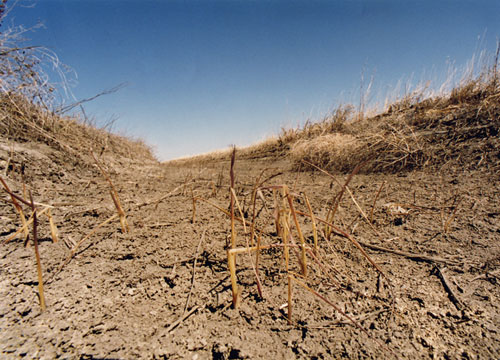
We in the Napa Valley depend on the winter rains to fuel and sustain the growth of our home gardens, vineyards and landscape. Downtown Napa has received less than 3.6" of rainfall since July 1, 2013, well below the average of 15.7" from past years.
While water conservation has long been an integral part of planning and maintenance of home gardens and landscapes, it is now an absolute imperative. Drip irrigation can reduce water usage by as much as 50 percent. Remove weeds that compete with your plants for water. Do everything you can to slow evaporation of precious water by mulching, providing wind breaks, and planting in blocks to provide shade for roots. Step up your pest control efforts as water stressed plants are more susceptible to infestation and disease. To aid the home gardener, UC Davis, UCCE, and Master Gardener groups are compiling and publishing research based information that can assist home gardeners in making informed choices during this period of drought.
Below are some ideas gathered from "Keeping Plantings Alive under Drought or Water Restrictions" by Janet Hartin and Ben Faber, published through UC Cooperative Extension, ANR:
Plants will show signs of stress during drought. Plants should be checked regularly for characteristic symptoms and watered in the early stage of water deficit to prevent irreversible damage. It is suggested to check plants in the afternoon when symptoms will be most evident.
Common symptoms:
- wilting or drooping leaves that do not return to normal by evening
- curled or chlorotic (yellow) leaves
- new leaves that are smaller than normal
- lawn grasses that retain a footprint for several minutes
Suggested maintenance:
Ornamental Trees
One or two deep irrigations with a garden hose several weeks apart in spring and summer will often keep these valued plants alive through summer, especially if roots are relatively deep. Although mature trees can often survive one season with only one or two deep waterings during the spring and summer, two seasons without enough water can result in severe drought stress and even death. Drought-stressed trees can be more prone to damage from diseases and insects.
Fruit and Nut Trees
To produce a good crop, deciduous fruit and nut trees need adequate water in their root zones continuously from bloom until harvest. Citrus trees need adequate soil moisture during spring to set fruit and steady water in summer and fall to produce acceptable size, numbers, and quality of fruit. However, fruit and nut trees can be kept alive with a few early-season water applications, but they may not set much fruit.
Vegetables
As a rule of thumb, water is most critical during the first few weeks of development, immediately after transplanting, and during flowering and fruit production. Tomatoes, beans, and root crops such as carrots require regular watering and are not tolerant to long, dry periods. Viney vegetables such as squash and zucchini can be kept alive with a few waterings once or twice a week through the season.
The full article can be found: Keeping Plantings Alive under Drought or Water Restrictions
Additional sources of information are available through the Drought Tips page at the UC Master Gardeners of Napa County website.